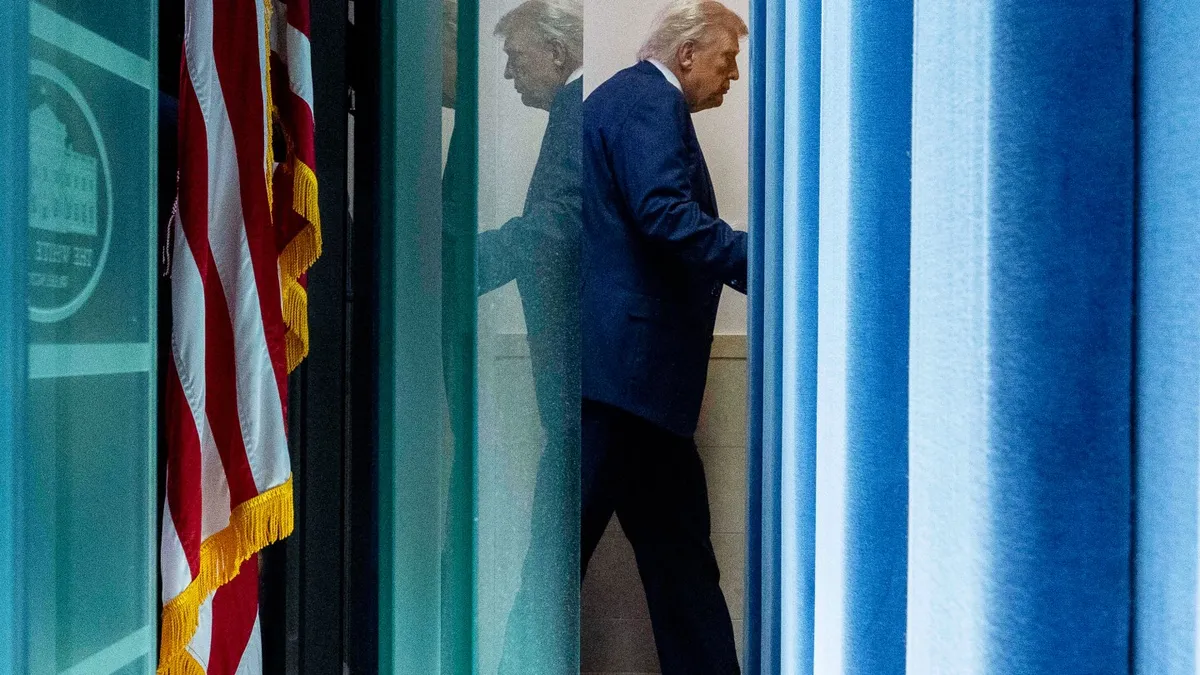
In a recent report released by the Treasury Department, it was revealed that the U.S. budget deficit in July has surged by 20% this fiscal year compared to the previous year. This increase comes despite the government collecting record revenue from tariffs implemented during President Donald Trump’s administration. The data indicates a staggering 273% rise in customs revenue, amounting to an additional $21 billion in July alone compared to the same month last year.
A Treasury official, who requested anonymity, explained that the overall increase in federal spending can be attributed to various expenditures. This includes rising interest payments on the public debt and escalated costs associated with Social Security payouts, among other financial obligations. As the federal government’s gross national debt approaches the $37 trillion mark, these spending pressures continue to challenge the nation's fiscal stability.
Despite President Trump’s assertions that America is becoming wealthier due to his import tax hikes, federal spending continues to exceed the revenues collected by the government. This financial imbalance could shift as companies deplete their pre-tariff inventories, which might compel them to increase imports. Such an increase could generate additional tax revenues, potentially reducing the deficit, albeit not to the extent promised by the administration.
If the tariffs do not yield the expected improvements in the government’s balance sheet, the American public may face a range of economic challenges. These include fewer job opportunities, rising inflationary pressures, and increased interest rates on essential loans such as mortgages, auto loans, and credit cards.
The budget deficit represents the annual shortfall between what the U.S. government collects in taxes and what it spends. Over time, this deficit contributes to the overall national debt. While organizations like the Committee for a Responsible Federal Budget argue that tariff income could serve as a significant revenue source—potentially generating around $1.3 trillion during Trump’s four-year term—economists like Kent Smetters from the University of Pennsylvania’s Penn Wharton Budget Model caution that tariffs may lead to only “modest reductions in federal debt.”
The Congressional Budget Office previously estimated that President Trump’s comprehensive tariff plan could reduce deficits by $2.8 trillion over a decade. However, this plan is projected to simultaneously contract the economy, raise inflation rates, and diminish overall household purchasing power. The unpredictability of revenue estimates complicates matters, particularly as the president has frequently altered tariff rates, and certain taxes enacted during an economic emergency are currently under judicial review.
In a recent appearance on Fox Business Network’s “Mornings with Maria,” Treasury Secretary Scott Bessent reaffirmed the administration's commitment to addressing the deficit, stating they are “laser-focused” on this goal. Furthermore, the Trump administration anticipates forging additional trade agreements with countries like China and other major economies.
For instance, President Trump recently extended a trade truce with China for an additional 90 days, maintaining the existing 30% tariffs as a prerequisite for ongoing negotiations. This extension was communicated through Trump’s Truth Social platform, and the Chinese Ministry of Commerce confirmed their agreement to the tariff pause as well.
As the situation develops, it remains to be seen how these trade negotiations and tariff policies will impact the U.S. economy and the ever-growing budget deficit.